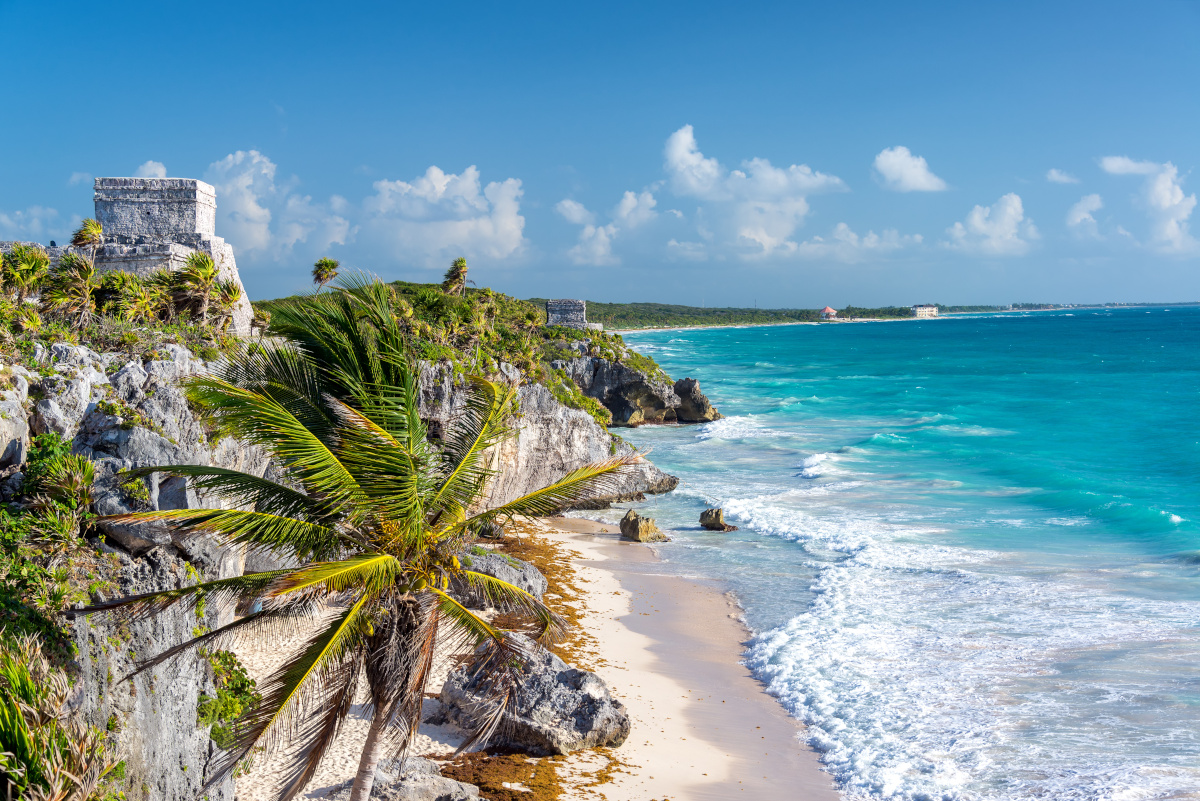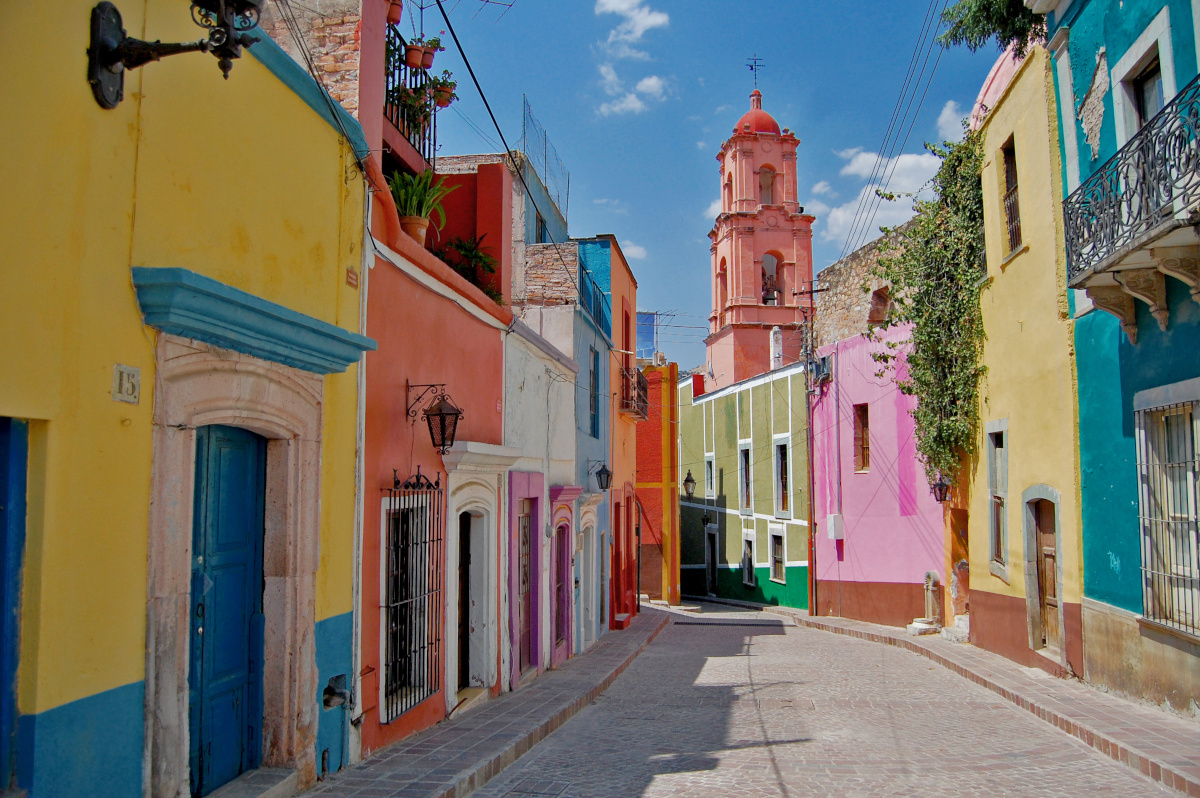
Mexico Travel Insurance: What You Need to Know Before You Go
Get Protected With The Best Trip Insurance For Mexico
Mexico is hugely popular with travelers from the U.S. — not only because it's relatively easy to get to, but also because it offers rich culture, untapped adventure, and endless opportunities for relaxation.
From the thoroughly cosmopolitan capital of Mexico City to the beaches of Tulum, Oaxaca, and Baja, Mexico is a place you can go back to again and again, only to find something different each time. But even though it's an extremely well-visited destination, it still comes with some risks.
To cover yourself in situations when you might need medical care, lose your luggage or belongings due to theft, or experience a trip delay, disruption, or other inconvenience, you'll need to take out travel insurance before you go.

Health & Safety in Mexico
Mexico has a thriving, robust tourist economy, which is proof that many visitors have safe and enjoyable trips to the country. However, there are some things to be aware of in advance of your visit.
Certain states and regions of Mexico have an enhanced risk of violent crime and kidnapping, and visitors should avoid any areas that the U.S. State Department deems unsafe for Americans. Do not travel at night, and avoid hailing taxis on the street; opt instead for dispatched vehicles, such as Uber.
When it comes to health concerns in Mexico, gastrointestinal illness is a common problem travelers face. To avoid any unpleasantness, drink bottled water and avoid ice cubes and raw fruits and vegetables. Mosquito-borne diseases, including dengue fever and chikungunya, are present in some regions, particularly during the rainy season, so you’ll want to take precautions to prevent mosquito bites.
As it does for all international destinations, the U.S. Centers for Disease Control and Prevention (CDC) recommends travelers be up-to-date on all routine vaccinations, such as measles, mumps, and rubella (MMR), tetanus, and hepatitis A and B. Additional vaccines, like typhoid, may also be recommended, especially for those visiting rural areas or staying for an extended period.
For travel tips and up-to-date information on health and safety in Mexico, always consult the U.S. Department of State’s country information page and the CDC’s country-specific guidance before a trip abroad, just in case.
Mexico is home to diverse wildlife, including venomous snakes, spiders, and marine creatures such as jellyfish and sea urchins. Wear appropriate footwear when traveling through wild areas, and listen to local guides and advisories about any risks to avoid.
In Mexico’s coastal regions, strong ocean currents and rip tides can pose risks to swimmers, so it’s important to only swim, surf, and snorkel in designated areas with lifeguards present. Mexico’s hurricane season is from June to November, and of particular concern in coastal areas along the Pacific and Gulf of Mexico. Pay attention to local forecasts and follow authorities’ guidance.
Earthquakes and volcanic activity are also natural disasters that can occur in Mexico, though the latter is more rare. Be aware of emergency procedures ahead of time, such as identifying safe spots in buildings, learning your accommodation’s evacuation procedures, and having an emergency contact plan.
To enable the State Department to reach out in case of natural disasters and other emergencies, and to receive timely updates on health, weather, safety, and security in your destination, U.S. travelers should register for the Smart Traveler Enrollment Program (STEP) before their trip.
Road conditions in Mexico vary, and some highways may be poorly maintained or lack proper signage, especially in rural areas. Driving at night is generally discouraged, due to hazards like unmarked speed bumps, stray animals, and potential security risks in certain regions.
While public transportation is widely used by locals, it should be avoided at night by tourists. When taking long-distance buses, first-class and executive services are safer and more comfortable. Rather than hailing taxis off the street, travelers should opt for reputable services, like registered taxis or ride-share apps.
Insurance Benefits & Coverage for a Trip to Mexico
The components of any good travel insurance policy are the same, so it would be an error if you didn’t confirm the coverage involved before committing to a plan. You’ll want to make sure you have each type of benefit listed below — that way you should be set, no matter what happens in Mexico.
Trip cancellation and trip interruption insurance:
Trip cancellation insurance can reimburse your non-refundable expenses if your trip to Mexico is canceled or cut short due to covered reasons, like illness, severe weather such as a hurricane, or family emergencies. For extra trip protection, cancel for any reason (CFAR) insurance can usually be requested as an add-on.
Travel medical insurance:
This helps cover medical expenses for injuries or illnesses incurred during your trip. Remember, your health insurance coverage from home will not be accepted for medical care in Mexico, and some Mexican healthcare facilities will require payment for treatment up front, so travel health insurance is a must if you want to avoid large credit-card bills. If you have pre-existing medical conditions, consider tacking on a waiver to your medical coverage.
Emergency medical evacuation insurance:
Emergency evacuation coverage should provide transportation to the nearest medical facility or back to the U.S. in extreme or emergency situations. If you are doing any extreme or adventure travel — such as surfing, trekking, or kayaking — in more rural parts of Mexico, you may be in areas with limited medical facilities. In that case, medical evacuation coverage would be essential if you urgently needed high-quality medical care.
Baggage and personal belongings insurance:
This helps cover loss, theft, or damage to your belongings, should anything happen to them during your trip.
Trip delay insurance:
Travel delay benefits can compensate you for additional expenses incurred if your trip is delayed before it starts, or during any connections or transfers.
Redpoint has a selection of travel insurance plans that offer crucial coverage for every type of trip to Mexico, no matter your activity level or travel needs.
For adventure travelers looking to hike the Lacandon jungle or surf the best breaks in Oaxaca and Baja, Ripcord is an extensive travel plan with high coverage limits and enhanced coverage.
If your primary goals are exploring Mexican culture in the major cities or relaxing at tourist resorts like Cabo San Lucas, Cavalry is particularly suited for urban travel and luxury experiences, while Harbor offers robust coverage for the budget-minded leisure traveler or backpacker.
You can buy travel insurance for a single trip to Mexico, or purchase an annual policy for multiple trips. Check out our plan options and get a quote today.
FAQs for Mexico Travel Insurance

1. Is travel insurance mandatory for Mexico?
2. How much is travel insurance for Mexico?
3. What should your travel insurance cover for a trip to Mexico?
If you're participating in any form of adventure while in Mexico, such as trekking, snorkeling, scuba diving, or surfing, make sure your coverage includes those activities as well.
4. Are there any COVID-19 restrictions for travelers to Mexico?
5. What happens if a tourist gets sick in Mexico?
If you need to call emergency services in Mexico, dial 911. Redpoint can also be reached for round-the-clock member assistance at +1-415-481-0610.
6. Are the hospitals good in Mexico?
If you have trouble accessing adequate care in a hospital, you can contact Redpoint's emergency assistance line for help and guidance.
7. What documentation is needed to visit Mexico?
8. Is Mexico safe to visit?
Be aware that if you're somewhere unsafe and run into trouble, the State Department may have limited capacity to assist you, given the fact that government employees are restricted from traveling to certain states of Mexico.
9. Is Mexico safe for female travelers?
Still, women should always take precautions, including being vigilant in clubs, bars, and nightlife, avoiding public transportation at night, and only using prebooked vehicles (such as Uber) rather than hailing taxis on the street. It's always wise to share your itinerary with someone at home as well as someone locally, and keep them informed of any last minute changes.
10. How do I contact the U.S. Embassy in Mexico?
Paseo de la Reforma 305
Colonia Cuauhtemoc
06500 Mexico, CDMX
Tel: +55-5080-2000
Redpoint Travel Protection Has Your Back
Redpoint is known for comprehensive and easy-to-understand policies that suit any type of trip, from laid-back beach vacations to hiking, trekking, and waterfall chasing. Take a closer look at our travel insurance plans — Ripcord, Cavalry, and Harbor — and get a quote for your next trip today.

